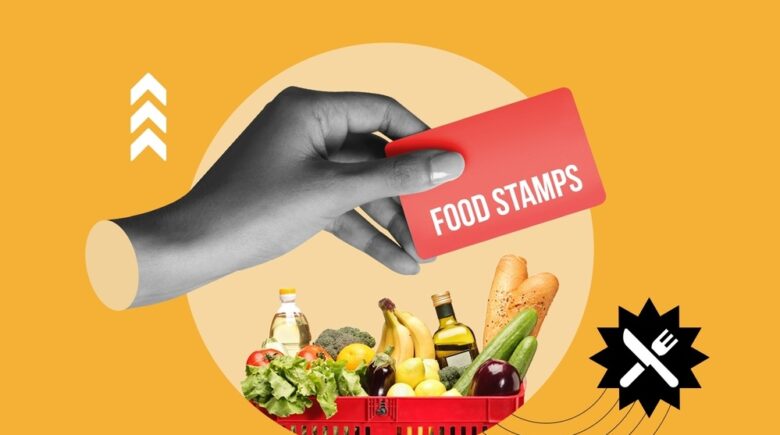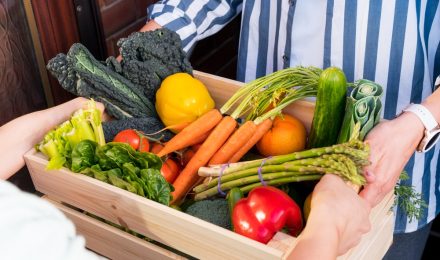Table of Contents
- Income Eligibility Requirements for SNAP in 2025
- Gross Income Limits (130% of Federal Poverty Level):
- Net Income Limits (100% of Federal Poverty Level):
- Resource Limits and What Counts as an Asset
- Work Requirements and Able-Bodied Adults Without Dependents (ABAWDs)
- Citizenship and Immigration Status Requirements
- Application Process and Required Documentation
- Special Considerations for Seniors and Disabled Individuals
- Maintaining Eligibility and Recertification
- References
The Supplemental Nutrition Assistance Program (SNAP), formerly known as food stamps, is the largest federal nutrition assistance initiative in the United States. It provides monthly benefits to eligible low-income individuals and families to help purchase food. In 2025, the program continues to be a critical lifeline amid rising inflation and ongoing economic uncertainty, with expanded digital access and revised eligibility thresholds aimed at improving outreach and accessibility.
Income Eligibility Requirements for SNAP in 2025
To qualify for SNAP, applicants must meet income criteria that account for household size, gross monthly income, and net income after allowable deductions. These figures are updated annually based on the federal poverty guidelines. In 2025, the U.S. Department of Agriculture (USDA) has slightly adjusted these thresholds to reflect cost-of-living changes.
Gross Income Limits (130% of Federal Poverty Level):
- 1-person household: $1,580/month
- 2-person household: $2,137/month
- 3-person household: $2,694/month
- 4-person household: $3,250/month
- Each additional person: +$557/month
Net Income Limits (100% of Federal Poverty Level):
These limits apply after deductions are factored in, such as housing costs, utilities, childcare, and medical expenses for elderly or disabled members.
Certain households—especially those with elderly or disabled members—are only required to meet the net income test. States may also use broad-based categorical eligibility (BBCE) to expand access, allowing families with higher gross incomes but significant expenses to still qualify.
Resource Limits and What Counts as an Asset
SNAP generally does not count most personal property or retirement savings as resources. However, households without elderly (60+) or disabled members must have resources not exceeding $2,750. If there is an elderly or disabled member, the limit rises to $4,250. Countable resources include:
- Cash on hand
- Money in checking and savings accounts
- Stocks and bonds
- Property not used as a primary residence
Vehicles are usually excluded unless their value is deemed excessive and not used for work or essential transportation.
Work Requirements and Able-Bodied Adults Without Dependents (ABAWDs)
In 2025, work requirements remain in place for able-bodied adults without dependents (ABAWDs) aged 18–54. These individuals must meet the following criteria to receive benefits beyond three months in a 36-month period:
- Work or participate in a work program for at least 80 hours per month
- Enroll in a qualifying education or training program
Exemptions apply for individuals who are pregnant, medically certified as physically or mentally unfit for work, or residing in areas with insufficient job opportunities. Many states and municipalities have requested and received waivers for these time limits, depending on their local unemployment rates and labor market conditions.
Citizenship and Immigration Status Requirements
To be eligible for SNAP, applicants must be U.S. citizens or meet specific immigration criteria. Eligible non-citizens typically include:
- Lawful permanent residents (LPRs or green card holders) who have lived in the U.S. for five years
- Refugees and asylees
- Certain non-citizens with a qualified status, including victims of trafficking or domestic violence under special legal protections
Children under 18 who are LPRs may be eligible without meeting the five-year requirement. Importantly, SNAP benefits do not count against an individual under the public charge rule, preserving access for immigrant families.
Application Process and Required Documentation
Applying for SNAP is a state-level process, even though the program is federally funded. Most states now offer online application portals, phone assistance, and in-person services. Applicants typically need to provide:
- Identification (e.g., driver’s license, birth certificate)
- Proof of residency (e.g., utility bills, lease agreements)
- Social Security numbers for all household members
- Income verification (e.g., pay stubs, tax returns)
- Documentation of expenses (rent/mortgage, childcare, medical costs)
Interviews are generally required and may be conducted by phone or in person. Emergency SNAP benefits may be issued within seven days for applicants facing dire financial need.
Special Considerations for Seniors and Disabled Individuals
Households with seniors or individuals with disabilities benefit from relaxed eligibility rules and additional deductions. These include:
- Medical expense deduction for out-of-pocket costs above $35/month
- Higher resource limits
- No gross income test requirement if other criteria are met
Many states also participate in the Elderly Simplified Application Project (ESAP), which streamlines the process for seniors and reduces the frequency of recertification.
State Variations and Expanded Programs
SNAP eligibility is subject to federal minimums, but states can adopt policies that broaden access. In 2025, many states continue to use BBCE to eliminate asset tests or raise income thresholds. Some also offer transitional SNAP benefits for families leaving Temporary Assistance for Needy Families (TANF) or other welfare programs.
Additionally, pilot programs in selected states allow SNAP recipients to use benefits for online grocery shopping, expanding food access for rural and mobility-challenged populations. The USDA’s ongoing push for digital equity has also led to the expansion of mobile-friendly applications and SNAP participation tracking tools.
Maintaining Eligibility and Recertification
SNAP recipients must periodically re-certify their eligibility, typically every six to twelve months. During recertification, individuals must report any changes in:
- Income or employment status
- Household composition
- Living expenses
- Immigration or disability status
Failure to provide accurate or timely updates can result in delayed benefits or disqualification. Most states offer automated reminders and renewal portals to ease this process.
Conclusion: Accessing Food Assistance with Dignity in 2025
As the cost of living continues to challenge households nationwide, SNAP remains a crucial support mechanism. By understanding the income thresholds, work and resource requirements, and application processes, eligible individuals can access this vital program with confidence. The year 2025 sees broader digital integration and more inclusive policies across many states, making it easier than ever to apply and receive support.
Accessing food assistance should not be a bureaucratic barrier but a straightforward path to nutritional stability and better quality of life.
References
- U.S. Department of Agriculture – Food and Nutrition Service. (2025). SNAP Eligibility. Retrieved from: https://www.fns.usda.gov/snap/recipient/eligibility
- Center on Budget and Policy Priorities. (2025). Policy Basics: The Supplemental Nutrition Assistance Program (SNAP). Retrieved from: https://www.cbpp.org/research/food-assistance/the-supplemental-nutrition-assistance-program-snap
- National Council on Aging. (2025). SNAP Benefits for Seniors. Retrieved from: https://www.ncoa.org/article/snap-benefits-for-seniors
Table of Contents
- Income Eligibility Requirements for SNAP in 2025
- Gross Income Limits (130% of Federal Poverty Level):
- Net Income Limits (100% of Federal Poverty Level):
- Resource Limits and What Counts as an Asset
- Work Requirements and Able-Bodied Adults Without Dependents (ABAWDs)
- Citizenship and Immigration Status Requirements
- Application Process and Required Documentation
- Special Considerations for Seniors and Disabled Individuals
- Maintaining Eligibility and Recertification
- References
The Supplemental Nutrition Assistance Program (SNAP), formerly known as food stamps, is the largest federal nutrition assistance initiative in the United States. It provides monthly benefits to eligible low-income individuals and families to help purchase food. In 2025, the program continues to be a critical lifeline amid rising inflation and ongoing economic uncertainty, with expanded digital access and revised eligibility thresholds aimed at improving outreach and accessibility.
Income Eligibility Requirements for SNAP in 2025
To qualify for SNAP, applicants must meet income criteria that account for household size, gross monthly income, and net income after allowable deductions. These figures are updated annually based on the federal poverty guidelines. In 2025, the U.S. Department of Agriculture (USDA) has slightly adjusted these thresholds to reflect cost-of-living changes.
Gross Income Limits (130% of Federal Poverty Level):
- 1-person household: $1,580/month
- 2-person household: $2,137/month
- 3-person household: $2,694/month
- 4-person household: $3,250/month
- Each additional person: +$557/month
Net Income Limits (100% of Federal Poverty Level):
These limits apply after deductions are factored in, such as housing costs, utilities, childcare, and medical expenses for elderly or disabled members.
Certain households—especially those with elderly or disabled members—are only required to meet the net income test. States may also use broad-based categorical eligibility (BBCE) to expand access, allowing families with higher gross incomes but significant expenses to still qualify.
Resource Limits and What Counts as an Asset
SNAP generally does not count most personal property or retirement savings as resources. However, households without elderly (60+) or disabled members must have resources not exceeding $2,750. If there is an elderly or disabled member, the limit rises to $4,250. Countable resources include:
- Cash on hand
- Money in checking and savings accounts
- Stocks and bonds
- Property not used as a primary residence
Vehicles are usually excluded unless their value is deemed excessive and not used for work or essential transportation.
Work Requirements and Able-Bodied Adults Without Dependents (ABAWDs)
In 2025, work requirements remain in place for able-bodied adults without dependents (ABAWDs) aged 18–54. These individuals must meet the following criteria to receive benefits beyond three months in a 36-month period:
- Work or participate in a work program for at least 80 hours per month
- Enroll in a qualifying education or training program
Exemptions apply for individuals who are pregnant, medically certified as physically or mentally unfit for work, or residing in areas with insufficient job opportunities. Many states and municipalities have requested and received waivers for these time limits, depending on their local unemployment rates and labor market conditions.
Citizenship and Immigration Status Requirements
To be eligible for SNAP, applicants must be U.S. citizens or meet specific immigration criteria. Eligible non-citizens typically include:
- Lawful permanent residents (LPRs or green card holders) who have lived in the U.S. for five years
- Refugees and asylees
- Certain non-citizens with a qualified status, including victims of trafficking or domestic violence under special legal protections
Children under 18 who are LPRs may be eligible without meeting the five-year requirement. Importantly, SNAP benefits do not count against an individual under the public charge rule, preserving access for immigrant families.
Application Process and Required Documentation
Applying for SNAP is a state-level process, even though the program is federally funded. Most states now offer online application portals, phone assistance, and in-person services. Applicants typically need to provide:
- Identification (e.g., driver’s license, birth certificate)
- Proof of residency (e.g., utility bills, lease agreements)
- Social Security numbers for all household members
- Income verification (e.g., pay stubs, tax returns)
- Documentation of expenses (rent/mortgage, childcare, medical costs)
Interviews are generally required and may be conducted by phone or in person. Emergency SNAP benefits may be issued within seven days for applicants facing dire financial need.
Special Considerations for Seniors and Disabled Individuals
Households with seniors or individuals with disabilities benefit from relaxed eligibility rules and additional deductions. These include:
- Medical expense deduction for out-of-pocket costs above $35/month
- Higher resource limits
- No gross income test requirement if other criteria are met
Many states also participate in the Elderly Simplified Application Project (ESAP), which streamlines the process for seniors and reduces the frequency of recertification.
State Variations and Expanded Programs
SNAP eligibility is subject to federal minimums, but states can adopt policies that broaden access. In 2025, many states continue to use BBCE to eliminate asset tests or raise income thresholds. Some also offer transitional SNAP benefits for families leaving Temporary Assistance for Needy Families (TANF) or other welfare programs.
Additionally, pilot programs in selected states allow SNAP recipients to use benefits for online grocery shopping, expanding food access for rural and mobility-challenged populations. The USDA’s ongoing push for digital equity has also led to the expansion of mobile-friendly applications and SNAP participation tracking tools.
Maintaining Eligibility and Recertification
SNAP recipients must periodically re-certify their eligibility, typically every six to twelve months. During recertification, individuals must report any changes in:
- Income or employment status
- Household composition
- Living expenses
- Immigration or disability status
Failure to provide accurate or timely updates can result in delayed benefits or disqualification. Most states offer automated reminders and renewal portals to ease this process.
Conclusion: Accessing Food Assistance with Dignity in 2025
As the cost of living continues to challenge households nationwide, SNAP remains a crucial support mechanism. By understanding the income thresholds, work and resource requirements, and application processes, eligible individuals can access this vital program with confidence. The year 2025 sees broader digital integration and more inclusive policies across many states, making it easier than ever to apply and receive support.
Accessing food assistance should not be a bureaucratic barrier but a straightforward path to nutritional stability and better quality of life.
References
- U.S. Department of Agriculture – Food and Nutrition Service. (2025). SNAP Eligibility. Retrieved from: https://www.fns.usda.gov/snap/recipient/eligibility
- Center on Budget and Policy Priorities. (2025). Policy Basics: The Supplemental Nutrition Assistance Program (SNAP). Retrieved from: https://www.cbpp.org/research/food-assistance/the-supplemental-nutrition-assistance-program-snap
- National Council on Aging. (2025). SNAP Benefits for Seniors. Retrieved from: https://www.ncoa.org/article/snap-benefits-for-seniors







